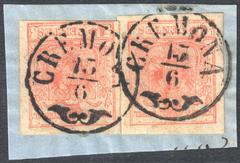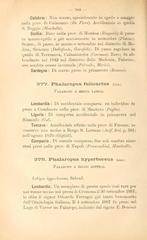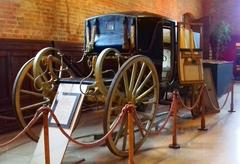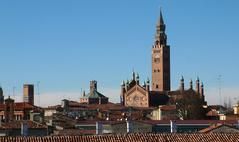
Discovering Cremona: The Ultimate Insider’s Guide
Published Date: 14/08/2024
Start Your Journey: An Invitation to Explore Cremona
Welcome to Cremona, a city where history, music, and culinary delights blend harmoniously to create an unforgettable experience. Nestled in the heart of Lombardy, Italy, Cremona is a living tapestry of European history, having been founded by the Romans in 218 BC (Britannica). This city has seen it all—Gothic invasions, Lombard rule, and even the touch of Napoleon. Imagine walking through cobblestone streets where each step echoes with the legacy of legendary violin makers like Antonio Stradivari and Giuseppe Guarneri. Cremona isn’t just a city; it’s a symphony of experiences waiting to be explored.
Did you know that Cremona is home to more than 140 violin workshops, making it the global epicenter of violin craftsmanship? The city’s musical heritage is so rich that UNESCO recognized its traditional violin craftsmanship as an intangible cultural heritage in 2012 (Turismo Cremona). But Cremona is not just about violins; it also offers culinary delights like torrone (nougat) and mostarda (candied fruit in mustard-flavored syrup) that tantalize the taste buds and tell a story of their own (Travel to Italy Guide).
Whether you’re a history buff, a music aficionado, or a foodie, Cremona has something for everyone. From the towering Torrazzo, one of Europe’s tallest brick towers, to the bustling Piazza del Comune, the city is a treasure trove of hidden gems and local secrets. Ready to dive into this symphony of history and culture? Let’s explore Cremona, one note at a time.
What’s Inside: A Sneak Peek
- Historical Overview of Cremona
- Roman Origins and Early History
- Medieval Period
- Renaissance and Baroque Periods
- 19th and 20th Centuries
- Architectural and Cultural Landmarks
- Modern Cremona
- Significance of Cremona, Province of Cremona, Italy
- A Melodious Introduction
- Historical Significance: A Tale of Triumphs and Tribulations
- Musical Heritage: The Heartbeat of Cremona
- Hidden Gems and Local Secrets
- Sensory Descriptions: Feel the Music, Taste the History
- Cultural Context and Etiquette
- Practical Information with a Twist
- Seasonal Highlights
- Call to Action
- Visitor Tips
- Getting There
- Getting Around
- Accommodation
- Key Attractions
- Cultural Insights
- Dining
- Practical Tips
- Additional Resources
Unveiling Cremona: A Symphony of History and Culture
Roman Origins and Early History
Cremona, nestled in the heart of Lombardy, Italy, is like a time machine set to a symphony. Founded by the Romans in 218 BC, this gem has been playing its historical tune since the days of ancient Rome. Positioned strategically on the north bank of the Po River, it was a bustling hub for military and trade. Even the famed poet Virgil studied here, hinting at its early cultural significance (Britannica).
Medieval Period
Fast forward to medieval times, and you’ll find a city resilient against invasions by Goths and Huns, only to be reborn by the Lombards in the 7th century. By the 9th century, it had earned its stripes as a bishopric. In 1098, Cremona declared itself an independent commune, initially backing Emperor Frederick I Barbarossa against Milan. However, in 1167, it joined the Lombard League, an alliance of northern Italian towns (Britannica).
Renaissance and Baroque Periods
In the Renaissance and Baroque periods, Cremona became the Stradivarius of cities, renowned for its violin-making. The Amati family, Guarneri, and the legendary Antonio Stradivari perfected the craft here. These violins are the rockstars of the music world, still revered today (Travel to Italy Guide).
During this era, Cremona played musical chairs with rulers: Visconti (1334-1535), Sforzas, Venetians (1499-1509), Spanish (1535), and Austrians (1707). Each power left its architectural and cultural notes, enriching the city’s historical symphony (Britannica).
19th and 20th Centuries
The 19th century saw Cremona joining the Kingdom of Italy in 1861, thriving with industrial growth. It became a maestro in agriculture, machinery, silk textiles, and even pianos (Britannica).
The 20th century brought both trials and triumphs. World War II bombings couldn’t silence Cremona’s spirit. Post-war, the city experienced a cultural and economic revival, notably opening the Museo del Violino to showcase its stringed instrument legacy (Travel to Italy Guide).
Architectural and Cultural Landmarks
Cremona’s architectural masterpieces are like notes in a grand composition. The Cremona Cathedral, with its Romanesque facade and soaring bell tower, whispers tales of medieval grandeur. Consecrated in 1190, it dazzles with frescoes and sculptures (Travel to Italy Guide).
Don’t miss the Torrazzo of Cremona, one of Europe’s tallest brick towers at 112 meters, offering panoramic city views. The Piazza del Comune, lined with elegant palaces, is the perfect stage for soaking in the city’s historic ambiance (Travel to Italy Guide).
Modern Cremona
Today, Cremona is a vibrant blend of history and modernity. It’s home to the unique University School of Musical Paleography, dedicated to ancient musical manuscripts. The city’s calendar is dotted with cultural events and festivals that celebrate its rich musical heritage (Britannica).
Culinary delights are symphonic here, with local specialties like torrone (nougat) and mostarda (candied fruit in mustard-flavored syrup) offering a taste of Cremona’s heritage (Travel to Italy Guide).
Visitor Tips
For those planning a visit, here are some insider tips to compose your perfect Cremona experience:
- Museo del Violino: Dive into the violin-making tradition and marvel at some of the finest stringed instruments ever crafted.
- Cremona Cathedral and Torrazzo: Explore the stunning architecture and enjoy breathtaking views from the Torrazzo.
- Piazza del Comune: Soak in the historic ambiance and explore nearby palaces and buildings.
- Local Cuisine: Savor Cremona’s culinary masterpieces like torrone and mostarda.
- Cultural Events: Check the city’s event calendar for festivals and cultural celebrations.
Cremona’s historical depth, cultural richness, and modern vibrancy create a symphonic experience for travelers. Whether you’re a music aficionado, history buff, or foodie, this city offers a harmonious blend of experiences sure to leave a lasting impression.
Cremona: A Symphony of History, Craft, and Flavor
A Melodious Introduction
Picture this: a city where each cobblestone hums with the legacy of legendary violin makers, where the aroma of freshly made torrone tickles your nose, and ancient towers stand as silent witnesses to centuries of history. Welcome to Cremona, a place where history, music, and culinary delights converge in a harmonious blend that captivates the senses and the soul. Did you know that Cremona is home to more than 140 violin workshops? That’s more luthiers per square mile than anywhere else in the world!
Historical Significance: A Tale of Triumphs and Tribulations
Cremona’s story kicks off in 218 BC when the Romans founded it as a military outpost along the Po River. Its strategic location turned it into a bustling hub for trade and military operations. Over the centuries, Cremona has weathered invasions, reconstructions, and a medley of ruling powers—from the Goths and Huns to Napoleon himself. Each era has left an indelible mark on the city’s character, making it a living tapestry of European history. Fun fact: Napoleon once used Cremona’s iconic Torrazzo tower as a lookout point!
Musical Heritage: The Heartbeat of Cremona
Cremona is to violin making what Paris is to romance—a global epicenter. The 16th century saw the Amati family pioneering the craft, which was later perfected by legends like Antonio Stradivari and Giuseppe Guarneri. Their violins, renowned for their unparalleled craftsmanship, are showcased in the Museo del Violino, a must-visit for any music aficionado. In 2012, UNESCO recognized the traditional violin craftsmanship of Cremona as an intangible cultural heritage. Want a challenge? See if you can find the hidden violin shop where Stradivari’s great-great-grandnephew still crafts instruments by hand!
Hidden Gems and Local Secrets
Beyond its famous landmarks, Cremona has a treasure trove of hidden gems. Explore the lesser-known alleyways and you might stumble upon La Bottega del Violino, a quaint café where locals sip espresso and discuss the latest symphony. Don’t miss the Festa del Torrone in November, a local festival that sees the city transform into a playground of nougat delights.
Sensory Descriptions: Feel the Music, Taste the History
Strolling through Cremona, you’ll feel the cobblestones underfoot, hear the lilting melodies of a street violinist, and taste the rich, nutty sweetness of torrone. The city’s vibrant markets offer a feast for the senses—brightly colored fruits, the clatter of vendors, and the irresistible scent of freshly baked focaccia.
Cultural Context and Etiquette
When in Cremona, do as the Cremonese do! Greet locals with a friendly “Ciao!” and remember that a firm handshake goes a long way. Avoid loud conversations in the serene Museo del Violino, and always respect the local custom of taking a leisurely passeggiata (evening stroll) around Piazza del Comune.
Practical Information with a Twist
Getting around Cremona is a breeze—literally! Rent a bike and pedal through the city’s picturesque streets. The Museo del Violino is open from Tuesday to Sunday, 10 AM to 6 PM. And here’s a fun tip: the best time to visit is during the golden hour, when the setting sun casts a magical glow over the city.
Seasonal Highlights
Cremona is a city for all seasons. Spring brings blooming flowers and the sweet scent of cherry blossoms. Summer is perfect for open-air concerts and ice-cold gelato. Autumn’s cooler weather is ideal for exploring historical sites, while winter offers festive markets and the heartwarming taste of mulled wine.
Call to Action
Ready to explore the harmony of history, craft, and flavor that is Cremona? Dive into this symphony of experiences and let Audiala be your guide. Discover hidden gems, expert insights, and the magic of Cremona—one note at a time.
Discover Cremona: A Violin Maker’s Dream
Getting There
By Plane
Cremona is just a melody away, with three major airports playing the tune:
- Milano Malpensa (155 km): A little over an hour’s drive.
- Linate (100 km): A scenic, quick drive.
- Orio al Serio (98 km): Practically a stone’s throw!
For flight info, visit Turismo Cremona.
By Train
Hop on a train from Milan or other northern Italian cities like Brescia. In just over an hour, you’ll be in Cremona, ready to explore. Schedules and tickets at Trenord.
By Car
Prefer to drive? The A21 motorway leads you straight to Cremona. Park at Piazzale della Croce Rossa, just a 7-minute walk from Piazza del Comune (A Sprinkle of Italy).
Getting Around
By Bus
Navigate the city with ease using local buses. Routes and schedules at KM Spa.
Bike Sharing
Pedal through history with Cremona’s bike-sharing service. Details at Bicincittà.
Accommodation
From budget to bougie, Cremona has it all:
- B&B Hotel Cremona
- Casa Vacanze Il Violoncello
- Hotel Impero
- Locanda Al Carrobbio
For more options, visit Turismo Cremona.
Key Attractions
Violin Museum
A must-visit for music lovers, featuring instruments by Stradivari, Guarneri del Gesù, and Amati. Interactive exhibits make it fun for all ages (Italia Delight).
Piazza del Comune
One of Italy’s best-preserved medieval squares. Wander around the Cathedral, Baptistery, and Bell Tower (Travel Savvy Gal).
Torrazzo
At 111 meters, it’s the third tallest brick bell tower in the world. Climb up for stunning views and an astronomical clock (Lonely Planet).
Cultural Insights
Musical Heritage
Home to over 150 violin ateliers, Cremona’s violin-making tradition is UNESCO-recognized (Turismo Cremona).
Festivals
Celebrate music and sweets! The Stradivari Festival features world-class musicians, while the Torrone Festival in November celebrates nougat (Turismo Cremona).
Dining
Local Specialties
Taste Cremona with dishes like:
- Marubini: Stuffed pasta with beef, chicken, and veal.
- Torrone: Traditional nougat made from egg whites, honey, and almonds.
For a fancy meal, try Hosteria 700 (Travel Savvy Gal).
Practical Tips
Weather Considerations
Foggy in fall and winter. Plan your trips to avoid early mornings and late evenings (A Sprinkle of Italy).
Combined Tickets
Get discounted tickets for multiple attractions like the Cathedral and Baptistery (Travel Savvy Gal).
Emergency Contacts
- Emergency: 112
- Hospital: Ospedale di Cremona, Largo Priori, 1, Tel: +39 0372 4051
- Police: Comando Provinciale Cremona, Viale Trento e Trieste, 58, Tel: +39 0372 5581
More info at Turismo Cremona.
Additional Resources
Infopoint Cremona
Located at Piazza del Comune, 5. Contact at Tel: +39 0372 407081 or [email protected] (Turismo Cremona).
WiFi
Stay connected with free WiFi in various areas (Turismo Cremona).
By following these tips, your visit to Cremona will be a harmonious blend of history, culture, and culinary delights. And don’t forget to download the Audiala app for expert insights and hidden gems, making your travel experience even more enriching. Unlock Cremona’s secrets and stories with Audiala!
Your Next Step: Dive Deeper with Audiala
As our journey through the enchanting city of Cremona comes to an end, it’s clear that this is a destination that harmonizes history, culture, and modern vibrancy in a way few places can. From its Roman origins to its medieval resilience, and from its Renaissance musical mastery to its 20th-century triumphs, Cremona offers a rich tapestry of experiences that captivate the senses and the soul (Britannica, Travel to Italy Guide).
The city’s architectural marvels, like the Cremona Cathedral and the Torrazzo, stand as monumental testimonies to its storied past, while its dedication to the craft of violin-making continues to resonate across the globe (Turismo Cremona). The local cuisine, with its unique flavors of torrone and mostarda, offers a taste of Cremona’s rich culinary heritage.
Cremona is not just a place to visit; it’s a place to experience. Whether you’re strolling through its historic streets, savoring its local delicacies, or exploring its cultural landmarks, Cremona promises a symphonic journey that will leave a lasting impression. So why wait? Download the Audiala app and unlock the secrets and stories of Cremona. With expert insights and hidden gems at your fingertips, your adventure in this remarkable city will be nothing short of extraordinary.
Sources and Inspirations
- Britannica. (n.d.). Cremona. Retrieved from [https://www.britannica.com/place/C




